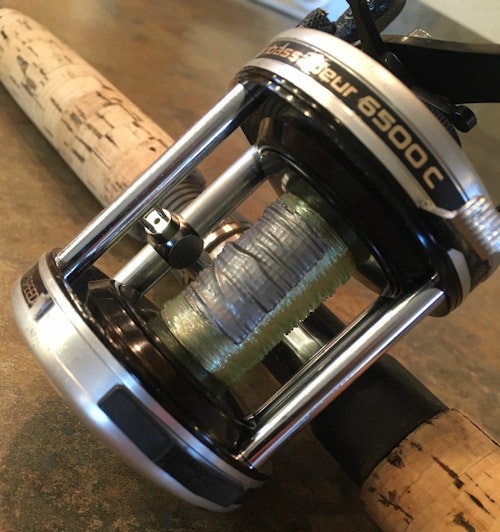Fishing line can be expensive, especially superbraids and fluorocarbons. And because superbraids are so small in diameter when compared to monofilaments of similar break strength, an angler can fit a lot more superbraid than mono on a fishing reel, which results in much higher overall cost.
A simple and cost-effective solution is to use backing on a fishing reel before filling it up with the desired braid or fluoro. Because the backing will never see the light of day, it doesn’t really matter what backing type you use, but you can’t go wrong with 8- to 14-pound mono, depending on the reel type and size.
For example, my various spinning reels are half to two-thirds full with old 8-pound mono for backing. When I want to respool a reel (spinning or baitcasting) with fresh mono, fluoro or braid, I simply add it on top of the backing. I don’t worry about tying a knot to connect the backing to the new line; the backing is taped down and simply serves as a larger size spool (arbor).

Depending on baitcasting reel size and purpose, I’ll use heavier line for backing. Generally I’ll use old 14-pound mono for backing and fill a baitcasting spool about half to two-thirds full. Old braid also works well for backing. Depending on the size line I’m using for fishing, I want to ensure I leave plenty of room for the new mono, fluoro or braid. It takes a bit of experimentation to get it just right.
For example, on a baitcasting reel designed for throwing hollow-bodied frogs for bass, I know that 75 yards of 50-pound braid is plenty. No bass is going to strike at the end of my cast and then run a great distance away from the boat. We aren’t talking tarpon, here. I should never get down to the backing unless I have some pilot error problem (backlash, etc.). That means if I buy a filler spool of 50-pound braid that contains 150 yards, it will top off two baitcasting reels.
By using backing and a smaller amount of fresh line on top of it, you can keep a reel filled to capacity with fresh line, which maximizes casting distance, especially with spinning reels.
Check out the video below to see how tournament bass pro Brent Ehrler uses backing (old 50-pound braid) to help fill his baitcasting reels with expensive fluorocarbon. He leaves about a quarter-inch of spool space to load the fluoro.






